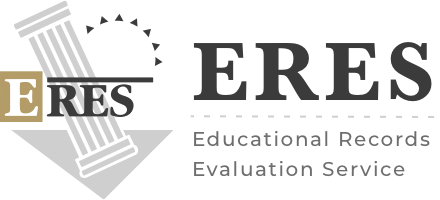International collaborative degree programs have been changing the higher education realm. They provide opportunities that enable students to gain qualifications from multiple institutions across various countries. These offers are called innovative educational models, which include dual, joint, and twinning programs. These models represent a significant shift in earning and structuring academic credentials.
However, these models are undeniably complex and instead create challenges for credential evaluators in navigating overlapping coursework, varied accreditation standards, and multi-institutional documentation requirements. As these educational models proliferate globally, understanding how these hybrid programs are evaluated becomes essential.
Key Takeaway
Individuals, including students and professionals, who hold such credentials, have an advantage in understanding how the evaluation field can distinguish between acknowledgement and bureaucratic obstacles when pursuing career opportunities or further education. Professional credential evaluation services offer crucial support for individuals with complex educational backgrounds that span multiple institutions and countries. Understanding evaluation processes helps these individuals ensure that their innovative educational achievements receive appropriate recognition in professional and academic contexts.
Understanding Program Types and Structures
Dual Degree Programs enable students to gain two separate degrees from two different institutions at the same time. Students must complete the full requirements of both degrees, often in extended study periods beyond the traditional four-year course. For instance, a student can pursue a Bachelor of Arts in Advertising simultaneously with a Bachelor of Fine Arts in Creative Writing to receive distinct credentials from each program upon completion.
Joint Degree Programs have integrated curricula coordinated and offered cooperatively by different higher education institutions. These programs result in double, multiple, or joint degrees by means of shared curriculum and unified graduation requirements. A joint degree differs from dual programs in that it involves qualifications that belong to more than one national system or may not be fully recognized by any single national system. Students who complete this program are awarded a single document representing a joint degree or several separate qualifications, referred to as double or multiple qualifications.
Twinning Programs include collaboration of educational initiatives where the primary institution awards the degree, along with a partner institution that provides the coursework. The primary institution provides academic supervision, while the secondary institution delivers the educational content. This arrangement enables students to gain degrees from prestigious institutions while studying at local or regional campuses.
Consortium and Partnership Models are multi-institutional collaborations that share resources like libraries, research activities, and professors that benefit the students. This collaboration is common among North American colleges and universities, which facilitates credit transfer arrangements and builds franchise or validation programs. This model extends institutional reach across geographic boundaries.
Common Challenges in Evaluation
Credit Overlap and Double-Counting Issues
In evaluating multi-institutional programs, credit overlap is one of the most complex challenges. This occurs when the same coursework appears to satisfy requirements for multiple degrees. Evaluators must verify whether the credits are from legitimate academic work or merely duplicated content. As a result, this can lead to devaluation in the sense that it questions academic integrity and results in inconsistent credit awards due to confusion over actual academic achievements.
Credential evaluators eradicate this issue by analyzing authenticated academic documents and carefully comparing them against established educational standards. Through direct communication with issuing institutions, they verify the authenticity while identifying coursework that covers similar subject matter to prevent redundancy in credit calculations.
Recognition and Accreditation Conflicts
Accreditation standards between partner institutions that are mismatched also create a significant evaluation dilemma. In one country, the programs may be recognized, but not in another, which creates complications for graduates who are seeking international mobility. Factors include variations in quality assurance across educational systems, as different countries follow varying standards for institutional and program validation. To resolve this conflict, it is necessary to establish a mutual understanding of standards, reach clear agreements on handling discrepancies, and maintain ongoing dialogue to bridge gaps while upholding the integrity of the partnership.
Documentation Complications
Language barriers in official documents present obstacles as there may be inconsistent grading scales between partner institutions, including varying academic calendars, which exacerbate the complexity. In fact, the credential evaluation process can take weeks to months, especially when applicants require an English translation of their non-English documents.
In order to solve this barrier, evaluators must study on different credit systems, varying documentation standards, and authentication requirements that encompasses across multiple institutional frameworks.
Institutional Standing Variations
Partner institutions often have varying reputations. They also experience shifting accreditation statuses throughout the program duration and varying quality assurance frameworks. The merger or closure of partner institutions during or after program completion creates additional complications for credential verification and ongoing program legitimacy. These factors significantly contribute to the valuation of credentials by employers and other educational institutions.
Program Structure Ambiguities
The ambiguous division of academic responsibilities between partner institutions creates a rift in evaluating credentials. Inconsistent program descriptions across institutions and evolving partnership agreements affects the pioneering graduates. As an effect, it could be challenging to establish standardized assessment criteria. These uncertainties require evaluators to regularly conduct checks, including minimum GPA requirements, prerequisite degree verification, and institutional recognition status.
Student and Graduate Strategies
To decrease these challenges among students, they should keep a record of all coursework and institutions throughout their academic journey. They could do this by collecting official documentation from each participating institution while being enrolled, as this secures the availability of the document when needed for professional or educational applications.
Students should also research evaluation requirements for target countries or employers early in the program to gather the necessary documentation proactively. This preparation can significantly reduce complications during later credential assessment processes.
Furthermore, an effective communication with credential evaluators often results in more efficient and accurate credential assessment. This involves providing clear explanations of program structure and submitting supplementary documentation proactively. Graduates should prepare to clarify credit distribution and overlap while maintaining open communication throughout the evaluation process.
Professional Credential Evaluation Support
Professional evaluation services offer expertise in complex program structures and international partnerships. These services provide access to institutional databases and accreditation verification resources that individual applicants may not readily obtain. They re professional in bringing a student or applicant’s experience with documentation reconciliation across multiple systems.
Such services can be obtained from the Educational Records Evaluation Service (ERES) Credential Evaluation Services. ERES offers a comprehensive evaluation approach specifically designed for multi-institutional programs. It offers specialized expertise to support professionals who have complex credential recognition requirements. Their proficiency in evaluation services provides immense support as it involves providing not only a simple analysis but a thorough assessment of international partnership programs.
As these programs continue to proliferate, there is a need for clear evaluation standards and recognition frameworks. Students, institutions, and employers can benefit from understanding how these complex credentials are assessed and valued in different contexts, ensuring that innovative educational models are recognized as professional opportunities.
References
Accreditation in the U.S. (n.d.). U.S. Department of Education. https://www.ed.gov/laws-and-policy/higher-education-laws-and-policy/college-accreditation/accreditation-in-the-us
Educational Records Evaluation Service (ERES). (2025, May 29). Benefits of professional evaluation services for international academic. ERES. https://eres.com/blog/benefits-of-professional-evaluation-services-for-international-academic
Evaluation of Foreign Degrees – United States Department of State. (2025, July 11). United States Department of State. https://www.state.gov/global-community-liaison-office/family-member-employment/family-member-employment-in-the-d-c-area/evaluation-of-foreign-degrees/
Joint degree program. (n.d.). Creatrix Campus. https://www.creatrixcampus.com/glossary-global-education-mobility-programs/joint-degree-program
Kenton, W. (2025, August 23). Understanding consortiums: Definitions, examples, and joint venture differences. Investopedia. https://www.investopedia.com/terms/c/consortium.asp
Knight, J., & Lee, J. (2023). International joint, double, and consecutive degree programs: New developments, issues, and challenges. In The Handbook of International Higher Education (pp. 415-428). Routledge.
Staff, Q. (2023, December 13). Dual-degree programs: What they are and why they’re worth it. Quinnipiac Today. https://www.qu.edu/quinnipiac-today/dual-degree-programs-what-they-are-and-why-theyre-worth-it-2023-12-13/
Sumner, P. (2025, July 24). Dual Degree vs. Double Major: What Are the Differences? Indeed Career Guide. https://www.indeed.com/career-advice/career-development/dual-degree-vs-double-major
Trential | Digital Verification Infrastructure for Education & Employment. (n.d.). https://trential.com/blog/ai-in-credential-evaluation-promise-risks-and-responsible-use
User, G. (2025, January 20). The challenges of international credential evaluation — My EQUALS Australia — My EQUALS Australia. My eQuals Australia. https://www.myequals.edu.au/news/the-challenges-of-international-credential-evaluation
What is a twinning programme? (2024, December 24). Gauth. https://www.gauthmath.com/knowledge/What-is-a-twinning-programme–7389696756130562051
www.enic-naric.net. (n.d.). Joint Programmes and Joint degrees – ENIC-NARIC. © 2014 – 2025 ENIC-NARIC – Gateway to Recognition of Qualifications. https://www.enic-naric.net/page-joint-programmes-joint-degrees




